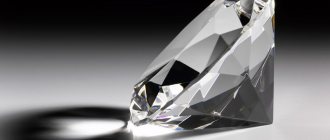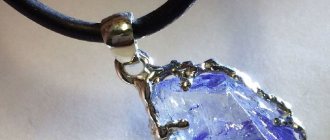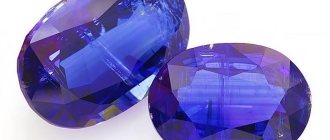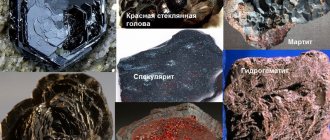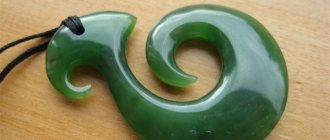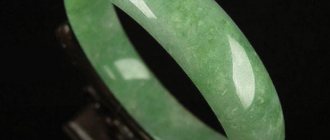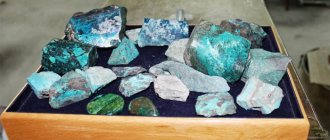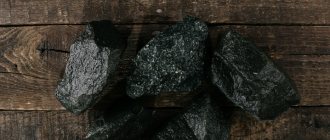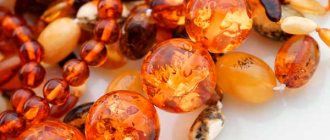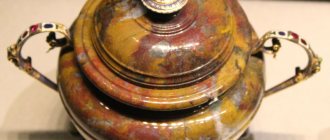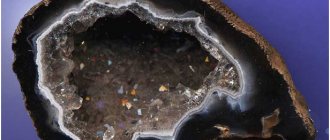Story
The Tengiz oil field in Kazakhstan has been exploited since 1979. It is one of the five largest oil holdings on the planet.
Work was in full swing until force majeure occurred in 1985:
- An explosion occurred at one of the wells, after which it caught fire.
- Whether this was spontaneous combustion or the accident was due to human fault is unknown.
- The fire was extinguished 14 months later. During this time, the sand and clay in the surrounding area melted (the temperature level was estimated at 3000°C), turning into a glassy mass with numerous inclusions.
- The matter ended with a sharp cooling down.
The mineral was classified as technogenic or anthropogenic. That is, it owes its origin to man.
It entered mineralogy as tengizite, named after its place of birth.
Tengizit stone - blue and wonderful
Hello, friends! A week dedicated to the color blue has started at the Masters Fair, and it is absolutely impossible to stay away from such a theme. And I would like to dedicate this article to one of the rare natural blue stones - tengizite. You can say that I am a “fan” of blue, and this color also predominates in my materials bins. But the catch is that there are very, very few natural stones of a blue hue (colored agates and composites do not count!). That’s why there were at most 2-3 types of blue stone in my collection: sodalite, lapis lazuli, kyanite. But one day, at the next gem fair, I saw blue stones, not stones, pieces of glass, not pieces of glass, and clung to them as if they were a treasure. The color pleased and amazed. The most correct blue color! Transparent, shiny, everything I like. It seemed to me that it was glass, but they assured me that it was a stone, and upon closer examination I was also convinced that it was still stone. I tried so hard to remember the name “ten-gi-zit” that I didn’t ask about the origin of the stone; I decided to read it later on the Internet. The story of the origin of the stone turned out to be incredible, and I really want to share it. True, there was little information: a mention on Wikipedia and a small, but comprehensive scientific article by Sergei Potapov, candidate of geological and mineralogical sciences, senior scientific associate. Laboratory of Mineralogy of Technogenesis, Institute of Mineralogy, Ural Branch of the Russian Academy of Sciences. It is not possible to retell such an article in your own words, so below I present the most interesting (they are also the most understandable to a non-specialist), as it seems to me, excerpts from it. (As far as I remember, direct links to NM cannot be indicated, so those curious can find the full article by “Google” by the name of the stone) So, what kind of “beast” is this - Tengizite: “In 1979, off the northeastern coast of the Caspian Sea there was The Tengiz oil field was discovered.
Tengiz is a unique oil and gas field in the world. In terms of reserves, it belongs to the so-called supergiant class and is one of the five largest deposits in the world. In connection with the development of oil fields, especially large ones, problems of man-made impact on the environment inevitably arise. Moreover, the degree of this influence depends on the scale and level of technological processes carried out during well drilling, oil production, artificial impact on formations, field preparation of extracted products and oil transport. The Tengiz field was not spared these problems either. Special operating conditions: great depth, high reservoir temperature and pressure, gas factor - led to an unpredictable emergency situation associated with the formation of an open fountain when drilling well No. 37 and spontaneous combustion of the gas-oil mixture. The dangerous and difficult struggle with the open burning fountain continued for 14 months in 1985-1986. In the process of prolonged combustion and at a high flame temperature of up to 2000 C (according to an optical thermometer), melting of near-well sands and clayey silts occurred with the formation of a lake of silicate melt with a diameter of about 100 m. The mineral composition of the substrate in order of decreasing content: quartz; calcite; illite; anorthitis; gypsum; a mineral from the chlorite group, such as rhipidolite; halite. The presence of the salt minerals gypsum and halite is due to the proximity of the Caspian Sea. This also explains the large number of calcite shells of mollusks. In addition, the substrate contains plant residues (seeds and flower buds), rounded fragments of bottle glass, metal equipment and other anthropogenic impurities. The temperature in the melting zone, according to various estimates, ranged from 1550-1600 C to 2400 - 3100 C. In general, the temperature was distributed unevenly over the area of the melt lake and naturally decreased from the source of the fire to the “shores”. When the fire was extinguished, the melt lake cooled, turning into a glassy technogenic rock, named by Kazakh geologists after the place of formation and location as tengizite. So what is tengisite? This is a technogenic glassy rock formed in the source of an oil fire from molten sands and clayey silts. The study of tengizite began only seven years after its formation, in 1993. It was carried out simultaneously, completely independently and with different methodological approaches, on the one hand, by a team of authors under the leadership of the famous natural glass specialist V.I. Feldman, and on the other, — author of the article. These studies showed that tengizite is not only glassy, but also a polymineral rock, which includes wollastonite, diopside, quartz, tridymite, anorthite, magnetite, and also possibly chalcedony, cristobalite and chlorite. Tengizite is closely associated with the Mesolite, consisting of tridymite, quartz, anorthite and calcite. The decorative qualities of tengizite are not difficult to notice even for a non-specialist, a person completely far from the world of stone. The stone is beautiful even in its raw form. Therefore, people who see it take pieces of tengizite as souvenirs. In the departments and laboratories of the joint Kazakh-American enterprise Tengizchevroil, there are samples of tengizite on the shelves. Geologists of the PGO "Zapkazgeology" selected a lot of stone and prepared a large exhibition in their museum. A solid collection of tengizite is collected in the storerooms of the museum named after. Academician V.I. Vernadsky in Moscow. Due to its decorative qualities, tengizite can be used in jewelry and art products. Tengizite has a rare color range for natural stones in deep blue and black tones, with transitions from one color to another. Light blue varieties have flatness similar to that of charoite. Black and blue tengizite are good for large items (stone miniatures, boxes). Tengizite, like obsidian, is easily cut and processed, acquiring an ideal polish. According to the classification of E.Ya. Kievlenko and co-authors (1974), tengizite is classified as a group of jewelry and ornamental stones of the second order along with agate, rhodonite, and obsidian. Essentially, tengizite is a new type of technogenic jewelry and ornamental raw material that can be considered as an object of gemology and used for making inserts in brooches, rings, earrings, pendants, necklaces, etc. One of the most important decorative characteristics of jewelry and ornamental stones is color. It is not for nothing that the terms “gems” and “colored stones” have been adopted for them. Tengizite has attractive black and blue colors, and the colors are rich and deep. The color of tengizite is determined both by the total iron content and by the ratio of differently coordinated iron in the glass structure, or, in other words, by the ratio of ferrous and oxide iron. The researchers also concluded that zonality with the symmetry of a circle with a center at the source of the fire in the distribution of temperature and iron content in the melt determined the lateral zonality in the color of the glass: black tengisite is located in the center, then blue and blue, and the peripheral zones are composed of brown porous glass, transitioning into the gray-yellow Mesolithic. At the same time, it should be noted that regardless of the color of tengizite in reflected light, when viewed through light they all have a brown color...” Needless to say, now I am a fan of tengizite! A stone with such origin cannot but surprise! Someone may say that he does not have very good energy, because he was born as a result of a disaster, but in my opinion, this can be said about many ornamental stones that attract with their beauty, that they occurred as a result of disasters and natural disasters. So I will confidently use tengizite in my creativity along with ammonites, amber and other fossils)) The first swallows, i.e. butterflies, are already in my store. These are paired brooches - butterflies with a set of beautiful Tengizite: Welcome!
Description
Externally, tengizite is glassy fused agglomerates with numerous veins and inclusions.
The heterogeneity of the structure is natural:
- During the fire, everything nearby came under fire. And this is not only soil, metals, biomaterial, but also drilling rigs and other equipment.
- The foam used to extinguish the fire also contributed.
Its color range is deep, rich blue-greenish, layered blue or black with smooth transitions from color to color. The veins and inclusions are brown or yellowish-green.
This is rare in the mineral kingdom.
The light blue stone looks like charoite.
Overflow mineral: properties, photos and description
Overcast stone photo
The mineral belongs to quartz aggregates with a layered structure. Sometimes it is called overflow agate or Ural agate.
Indeed, the gem has an external resemblance to the famous banded stone.
But they are still different breeds. Agates are formed by fibrous chalcedony layers.
Overflow has not fibers in its structure, but small crystals, and its hardness is an order of magnitude higher - 7 points according to the Mohs gemological assessment.
Other basic properties of overflow are characterized as follows:
- Color. The color of the layers can be grayish-green, gray-blue, brown, brown, pink-crimson, white. Nickel, copper, and iron ions helped nature create a wonderful pattern of a rainbow frozen in stone. Layer strips have different widths (from fractions of a mm to 8 mm).
- The shine is inherent in glass. After grinding and polishing, the unique pattern appears brighter, and the silky shine gives the stones a special charm.
- There is no transparency; in some specimens there is slight translucency.
- The iridescence is pronounced. This property is reflected in the name of the gem.
Unprocessed overflow
The full name of the stone, “walking” in the circles of gemologists, mineralogists and geologists, is Shaitan overflow.
It comes from the Ural toponym Shaitanka, the name of the village where the first samples of stone were found, and where the deposit was subsequently organized.
Tengizite, obsidian, shaitanite
Some believe that the mineral tengisite is a type of obsidian. However, these are different stones: in origin, external and internal parameters. Obsidian generated by volcanoes is black, tengizite is almost always blue.
Tengizite is confused with shaitanite. This is a mineral found in the Urals. Externally and structurally they are almost identical. Nothing is known about the origin of the Ural stone. But the name “Shaitanite” speaks for itself: Shaitan in Islamic theology is a spirit hostile to Allah and man.
Difference from fake and combination with other stones
Most often, the stone is combined with other crystals, guided by color combinations. At the same time, the white shade is considered universal. You can combine any stones with it.
It is not difficult to select complements to howlite, repainted green. It should not be combined only with emerald gems.
It is much more difficult to find stones for a mineral disguised as coral. It doesn't mix well with other shades, so choosing a complement can be difficult.
Howlite itself is often used to imitate other minerals. To distinguish it, you should pay attention to the following features:
- certificate of conformity;
- porcelain shine - not typical for more expensive crystals;
- the presence of bald spots and white elements in the structure;
- damage to the surface - this may include abrasions, chips and scratches;
- color mark when exposed to alcohol.
If you plan to buy howlite, you should focus on the following features:
- after a short period of time, the shade of the gem will change and become paler;
- under mechanical stress, the mineral will receive scratches and dents;
- upon contact with chemicals, the product will quickly deteriorate.
Where is the gem used?
Tengizite is classified as a jewelry and semi-precious stone of the second order. But it is so beautiful and rare that only jewelers, decorators and collectors get it.
Jewelry
The mineral is easy to process. A person is bewitched by the strong shine, internal shimmer and glow coming from the depths of the stone:
- The gem becomes an insert for jewelry accessories.
- The delicate color of tengizite makes it possible to wear two or three even large items at once.
- Exclusivity makes jewelry with tengizite appropriate for a status event, social event, or in the office.
Ring from Tengizit
Light stone is suitable even for a child. Darker pieces will add charm to a lady of mature years. A black stone in a ring or ring is a masculine attribute.
Decor
Instances of ornamental quality have found use as decoration. The production of candelabra, photo frames, tableware, dishes, and boxes has been established.
Paintings are created from stone chips; large opaque agglomerates are used for figurines and sculptures.
Collecting
Mineralogists became interested in the stones. The best specimens went to the leading museums of the country (at that time it was still the Soviet Union).
Event participants and local residents left something as a souvenir.
Today, any real Tengizite is a joy for a collector. To avoid getting into trouble, you need to buy it in Kazakhstan or from a reliable person.
History and origin
The unknown gem, which emerged from the Cape of Good Hope in the mid-18th century, immediately became recognized as a rare mineral. Gradually, prehnite was discovered in other mineral deposits.
There are quite a lot of countries with crystal mining sites:
- Territories of Germany and France;
- Australian continent;
- Austria;
- China;
- Scottish and American deposits.
The names of the mineral around the world do not agree on one thing. In Asian countries, the crystal is known as grape jade. In the southern African continent, the Cape emerald.
Other names known to mineralogists:
- edel (edelite);
- chiltonite;
- adil (adilite).
physical characteristics
Drop emerald is found in natural deposits; kidney-shaped fragments are found. They are dense and crystalline. The shape of the fossils is short columnar formations. Prehnite cannot be found in pure crystal form.
The composition is simple:
- luminosilicate;
- magnesium;
- calcium.
Formula Ca2Al(AlSi3O10)(OH)2. Hardness on the Mohs scale is 6 units. Pearlescent luster, close to glass glow.
The mineral is distinguished by its ability to glow with incredible brilliance in the sun's rays. Not resistant to high temperatures. When exposed to an open fire, the melting process begins. It is afraid of hydrochloric acid and begins to disintegrate.
According to transparency, the mineral is found in three types:
- Translucent;
- Translucent;
- Completely transparent is the rarest type of stone.
Place of Birth
Among the common mining sites, a large amount of stone is found, so it cannot be called rare. Under natural conditions, prehnite deposits are formed in conditions of hydrothermal, igneous rocks. The crystal is filled with voids and cracks.
Special distinctive specimens are found in different deposits.
Russian deposits:
- Spherical crystal forms;
- Compounds of prehnite with apophrinites;
- Samples of natural green color.
How to identify a fake
The structure and rarity of the stone tempt fraudsters to counterfeit it:
- Ordinary fused glass is displayed under the guise of tengizite. The randomness and variety of inclusions of a natural gem helps to distinguish a fake.
- Shaitanite is offered instead of stone. This is a natural, but cheaper gem.
All Tengizites appear brown in the light.
To avoid buying an imitation, just read the description carefully. Almost always, the insertion of the product is indicated as tengizite (shaitanit). Or the Ural river Shaitanka appears as a deposit. And it can only be Kazakhstan.
How to spot a fake
Despite its low cost, tengizite is imitated in several ways:
- Fused glass. You can distinguish a natural mineral from such a fake by the randomness of the arrangement of inclusions and their diversity.
- Shaitanite. This is a Ural natural gem, very similar to tengizite, but has a different origin, is not that rare and is cheaper. The tag, which often states “Tengizite/Shaitanit” and also contains information about the deposit of the stone, will help you clarify which mineral the seller is offering. If it is written “Ural, Shaitanka River” - this is Shaitanite. Tengizite is mined in only one deposit - Tengiz, Kazakhstan.
- Heat treated ore. Such a fake is visually difficult to recognize. Creating an imitation involves separating ore from metal, the product of which is slag colored with impurities, which looks like a unique gem.
Also read: Jadeite - an ancient source of luck and inspiration
Any of the tengizites tend to show through in a brown color.
Magical and healing properties
Professional lithotherapists, healers, and magicians have just begun to comprehend the meaning for humans, the magical and healing properties of the “young” stone itself.
However, legends and “mystical” stories have already been composed:
- For superstitious people, this is the creation of the devil, which appeared as a result of great misfortune.
- Romantic natures dubbed it “drops of the fiery sea” (translated from Kazakh “tengiz” means “sea”), “frozen fire”.
- In order to prevent the stone from being stolen for souvenirs, it was claimed that it was contaminated with radiation.
It has been established that the magic of the stone helps people who are determined, purposeful, and strong-willed.
There are no documented facts of negative influence of the magical properties of tengizite on the owner.
Physical properties
The main structure-forming component of tengizite is quartz. In addition to it, the stone contains a storehouse of microelements, particles of different rocks, as well as inclusions of plants and salts of the Caspian Sea, due to the close location of the sea. It is not easy to process stone - it is very fragile and difficult to polish. Opalescence is noticeable on a thin chip.
Also read: Tsavorite – the emerald green of Africa
Tengizit and Zodiac
Astrologers also study its influence on the signs of the Zodiac:
- Tengizite is a product of fire, so we can assume the special significance of the stone for Leo, Sagittarius, Aries.
- The name, which makes the stone related to the sea, does not exclude its compatibility with the Zodiac signs of the Water element.
But it is more rational to focus on personal compatibility with a specific stone. That is, hold it in your hands, assessing your personal feelings.
Magic properties
Even in ancient times, prehnite was very popular among magicians. People with superpowers used the stone to increase their magical power and to see prophetic dreams. The gem is of particular importance for women, as it helps them regain lost attractiveness, sexuality and gives the fair sex incredible positive energy, boundless charm, and self-confidence.
Owners of prehnite have no problem attracting men and creating strong marital bonds.
The crystal helps to establish mutual understanding in the family and helps solve problems that have arisen.
If you wear bracelets with an amazing crystal, you will be able to improve your relationship with your husband, solve family problems and find true friends. But the magical properties of the stone do not end there. Prehnite will become an indispensable assistant for people who need to go through difficult emotional experiences, get rid of mental pain and forget about losses. The mineral drives away evil intentions and negative thoughts.
It is worth understanding that not all stones are endowed with magical powers. For example, one cannot assert the magical influence of such an extraordinary material as perunite, since it was created by human hands. For the same reason, he is not classified as a specific zodiac sign. Perunite has all shades of blue and blue, which makes it very popular in jewelry.
Which zodiac sign suits you?
When purchasing howlite, your zodiac sign is of great importance. The best compatibility of the mineral is observed with Virgo and Gemini. At the first contact, the gem will help strengthen their sense of purpose and strengthen their immunity. The mineral also makes its owner more tolerant of other people and restores mental balance.
Gemini and Virgo should wear jewelry with howlite.
Capricorns and Scorpios can also wear this gem. However, it will only be effective with long-term use. The mineral will help cope with anger and irritability.
Howlite is completely contraindicated for representatives of fire signs - Aries, Sagittarius, Leo. In this case, the mineral simply blocks their protective aura and attracts misfortune.
Howlite is a unique mineral that has an attractive appearance and also has healing and magical properties. In order for the gem to bring the desired effect, it is important to wear jewelry with it correctly.
